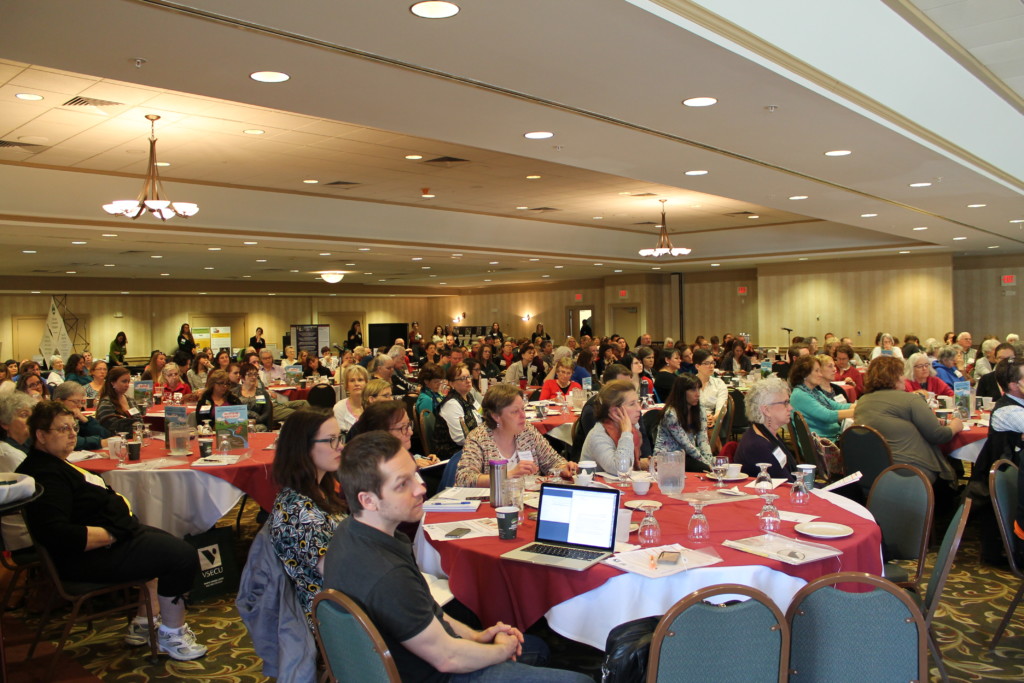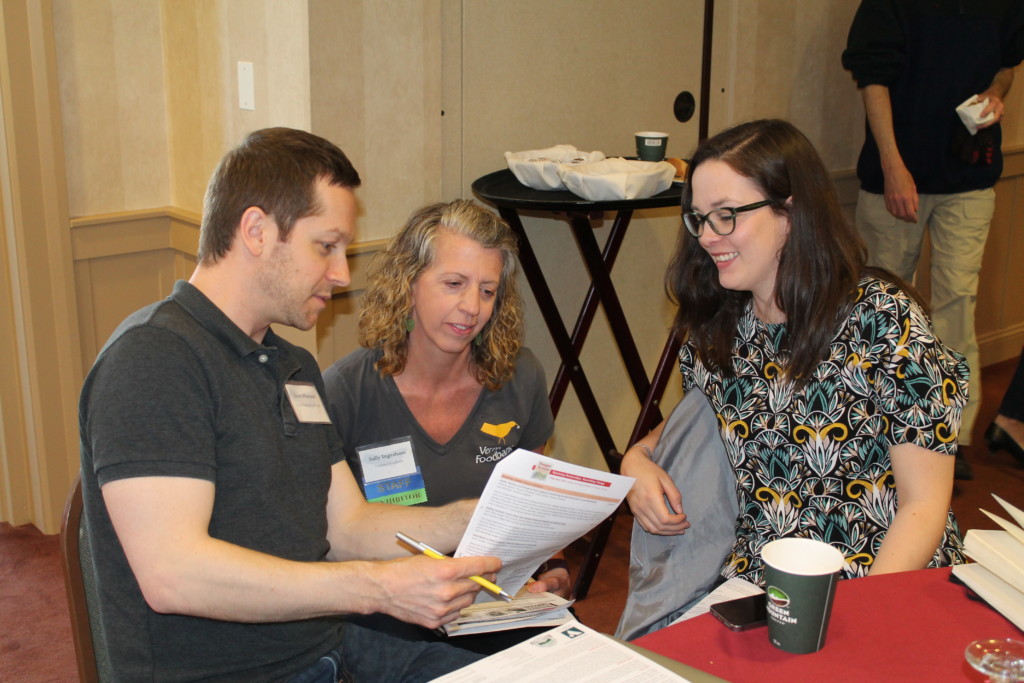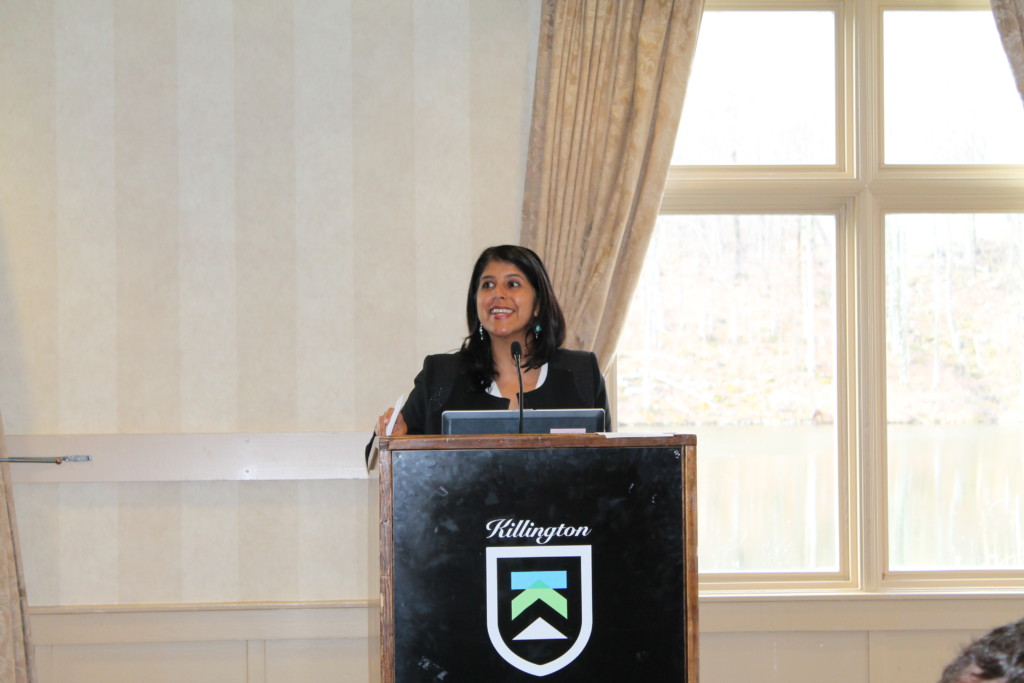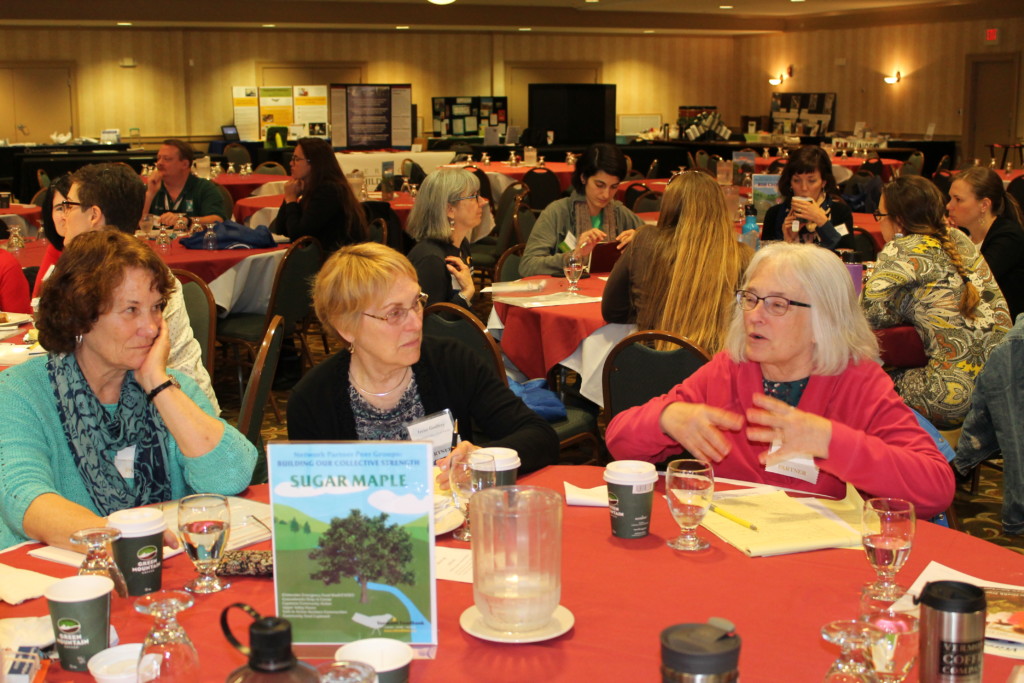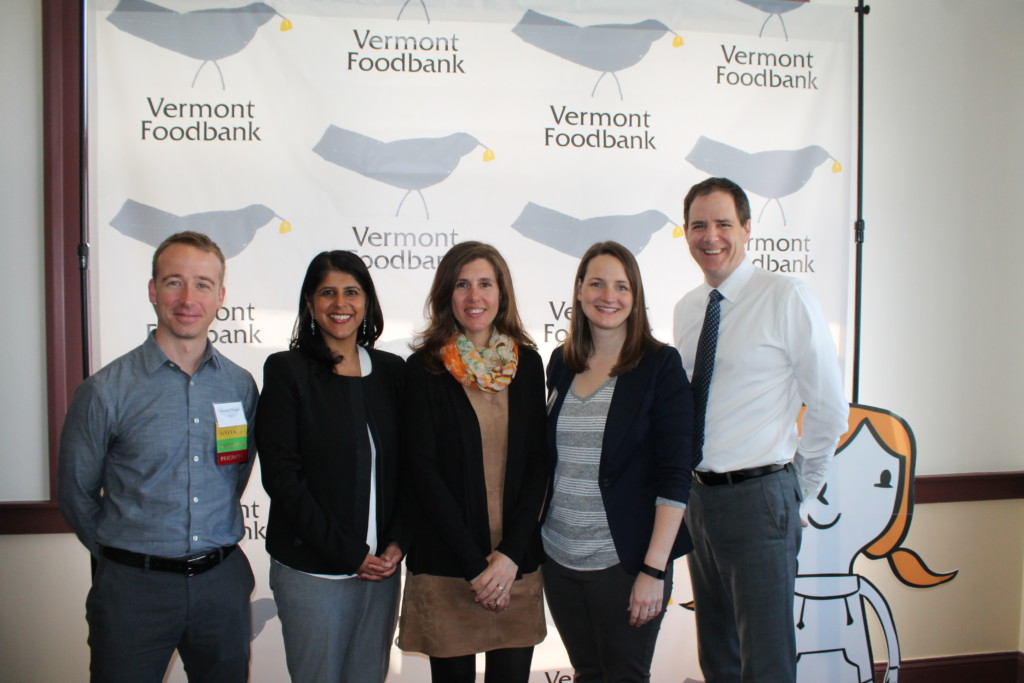This year’s Hunger Action Conference 2016 focused on the root causes of hunger and addressing poverty. The keynote speaker Smita Narula, a human rights advocate, attorney, spoke about the need to defend sustainable access to nutritious food as a fundamental human right.
Workshops covered everything from how to leverage funding and policy to help fight hunger to effective advocacy skill building to ways to make food shelves more user friendly. There were a number of workshops on the ties between health, medicine, and access to food.
Scroll down to see a selection of photos, workshop descriptions, videos, and PowerPoints from the conference. You can also check out #HACVT on Twitter and Facebook for posts about the conference.
Smita Narula’s Keynote Address
One in seven Americans struggles to put food on the table. Hunger in the United States is not the result of a shortage of food or of resources; it is the result of poverty, perpetuated through policies that fail to ensure a living wage or prioritize Americans’ most basic needs. Yet we continue to talk about hunger as a matter of charity instead of a matter of justice. We continue to treat access to sufficient, nutritious food as a privilege instead of a fundamental human right. This keynote addressed the root causes and devastating impacts of hunger in the United States. It introduced the audience to the “right to food” framework and explored the steps that we can take to empower people to claim their rights.
Fighting Hunger with Health
Laura Hale, VT Coalition of Clinics; Peter Youngbaer, People’s Health & Wellness Clinic
This workshop discussed the work that the free clinic programs do – many of whom have budgets under $200,000 – and what other small groups can do to access resources. It addressed the theme of needs, barriers and issues facing people living in poverty, as this is part of the discussion why low-income Vermonters have difficulty accessing traditional health care and what can be done to overcome that. Finally, it addressed how communities can partner and collaborate to increase their impact, discussing the many successful collaborations our free clinic programs engage in and how those can be expanded and replicated.
Preventing and Defusing Hostility and Anger
Myra Handy, Invest EAP
For professionals who find themselves in unpredictable situations while serving the public needs, this workshop helped increase understanding of how and why customer behavior escalates and provided a communication model proven useful in defusing anger and hostility. Discussion and exercises around special circumstances pertinent to your workgroup were emphasized. Please note that this is a workshop for defusing and is not meant to replace crisis response training.
Food is Medicine: Promoting Food Security in Health Care and Community Settings
Richard Sheward, Children’s HealthWatch, Boston Medical Center
An in-depth look at how The Hunger Vital Sign (a two-question food insecurity screening tool) enables community-based hunger relief organizations and health care organizations to partner and collaborate to increase their impact and address the root causes of hunger and poverty in innovative ways. A growing body of research shows that food insecurity and poverty are directly linked to one’s health. Now, for the first time, the American Academy of Pediatrics (AAP) is recommending that pediatricians screen all children for food insecurity. In a new policy statement identifying the short and long-term adverse health impacts of food insecurity, the AAP also recommends that pediatricians become familiar with and refer families to needed community resources, and advocate for federal and local policies that support access to adequate, nutritious food. This presentation described the development of this screening tool, its use in a variety of settings, and best practices for how organizations can strengthen the work they are doing to end hunger in Vermont.
It Takes a Region: Leveraging Federal and Philanthropic Funding to Fight Hunger
Ben Doyle, USDA Rural Development; Janet McLaughlin, Vermont Community Foundation Jon-Michael Muise, USDA Rural Development
The session explored the ways in which rural communities and organizations can support anti-poverty and hunger initiatives by leveraging Federal and philanthropic resources.
Simple Changes for Great Results: Ideas to Make Your Food Shelf More Efficient and User Friendly
Joe Dauscher, Vermont Foodbank
This workshop showed the key elements of the Vermont Foodbank’s mission of GATHER, SHARE, NURTURE can be implemented on a community level to enhance the overall operation of your food shelf.
Getting at the Root: What Causes Poverty and Hunger?
Angela Berkfield, ACT for Social Justice; Richard Berkfield, Food Connects
This session looked at the root causes of hunger and poverty. The goal was to shift the focus off of individuals and onto larger systemic issues that cause poverty and to leave with a few ideas for what we can do. This interactive workshop included stories, a film clip, movement, and resources for making change.
Michelle Wallace, Andrea Solazzo, Sara Whitehair, Vermont Foodbank
How do we get people excited about eating local Swiss chard, rutabaga, parsnips and beets? VT Fresh is a Vermont Foodbank program that uses strategies from behavioral economics research to get people excited about vegetables. We shared ideas ranging from simple tastings to beautiful “farmer’s market” style produce displays and signage being implemented at area food shelves. Be inspired to use these ideas at your local food shelves, meal sites, school cafeterias, childcare centers, corner stores, markets or even at home. Find out how to become a VT Fresh program partner in the near future.
Helping Vermont’s Youth Thrive: How Vermont Schools and Hospitals are Fighting Hunger
Faye Conte, Hunger Free Vermont; Bernice Garnet, University of Vermont Anore Horton, Hunger Free Vermont; Carlotta Peratoni, Waits River Valley School
This round table discussion highlighted creative partnerships between the anti-hunger, medical, and education communities to help Vermont children access the nutritious food they need to grow up healthy and succeed in school. It presented new data about food insecurity among VT middle school students from the Vermont Youth Risk Behavior Survey. The goal of the round table was to discuss how policy can impact children’s access to nutritious food – from how school meal programs are structured to policies within the health care field identifying hunger as an underlying issue of many health concerns.
Dried Beans or Dried Cranberries: Taking the Mystery out of USDA Foods
Rosie Krueger, Child Nutrition Programs – Vermont Agency of Education
Where do USDA Foods (aka TEFAP commodities) come from? Who decides what shows up every month? Why are there walnuts and canned salmon one month, and dried beans the next? Learn the answers to these questions and provide feedback on how the USDA Foods Program could better serve your agency. This session is appropriate for staff and volunteers at partner agencies receiving USDA Foods through TEFAP.
Effective Advocacy Skill Building for Public Policy Change on Issues of Hunger and Poverty
Kelly Ault, Vermont Early Childhood Alliance
This interactive session identified techniques that advocates can employ to be a force for system-wide and public policy change that can address the issues of hunger and poverty in Vermont. The workshop emphasized coalition building and creative solutions that empower stakeholders to be agents of change in their communities and statewide.
Hal Cohen, Secretary, Vermont Agency of Human Services
Hal Cohen spoke about the challenges and opportunities in the fight against hunger in Vermont.

